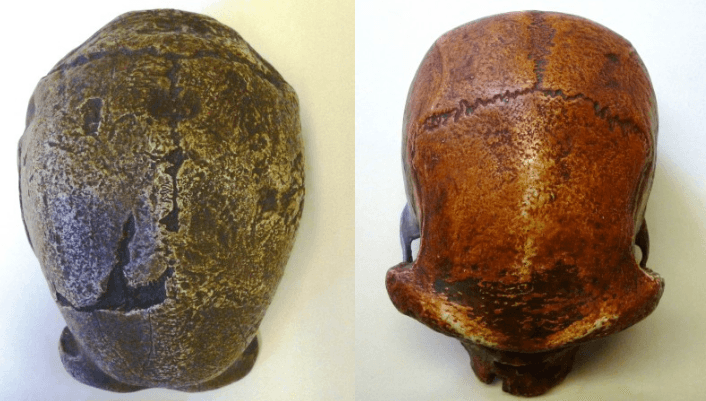Question of the Week: What’s that zigzag on your skull?
By Arendse I Lund, on 25 April 2017
Stan hangs out in a corner of the Grant Museum amid cases filled with insect exoskeletons and bisected animal heads. Standing at around two meters, he keeps watch through empty sockets over the animal bones, taxidermy, and jar specimens.
“Can I hold his hand?” I’ve been asked more than once. “Is he real?” comes the hesitant question. As a matter of fact, Stan is a model skeleton, the likes of which you’ve probably seen in any biology classroom. Although he’s resin and missing a joint or two he’s still a remarkably good way to explain what we’re made of once you strip all our clothes, skin, and muscles away.
One of Stan’s characteristics is a zigzagging line arching its way across his skull. Surprised by the mark, a visitor wanted to know why Stan bears this line. She might have been surprised to know that she has one too. It’s actually a feature all human skulls have. Known as the coronal suture, it’s an immovable joint that runs transverse across the skull, separating the frontal bone from the parietal bones.

Top view of a skull with coronal suture extending from ear to ear (Image: Stanford’s Children Health Hospital)
At birth, the various bones of the skull don’t quite join up, making it easier for the infant to fit through the birth canal; following the birth, the gap persists for a while and the coronal suture reflects where that separation once was. There can be “premature closing” of the suture if the bones fuse too soon and people will develop conditions such as oxycephaly—where the skull is lengthened—or plagiocephaly—where the skull is flattened.

Top view of skull casts, the left found in Beijing and commonly referred to as the “Peking man” but is actually thought to be female (Grant Museum Z2681); and the right of a Rhodesian Man found in Kabwe and known as the Broken Hill 1 skull (Grant Museum Z2684).
If you take an “exploded skull” view then you can see how the various parts of your head all join up. We can see these sutures in other skulls than just modern humans as these skulls are formed in similar ways.

Chimpanzee skull (left, Grant Museum Z461) and Neanderthal skull (right, Grant Museum Z2020) both showing coronal sutures.
Stan has a few friends at the Grant Museum. There’s a Neanderthal skull alongside Homo erectus, Homo habilis, and Australopithecus afarensis. There’s also a human skeleton that oversees the museum up on a balcony accompanied by an orangutan, gorilla, and chimpanzee—all bearing these sutures.
Next time you see a human skull in a museum, see if you can spot the coronal suture. While knowing its name may not win you any prizes in a pub quiz, it’ll certainly impress Stan. He’ll be waiting to say hi.
Follow @Arendse on Twitter or read more of her blog posts here.
One Response to “Question of the Week: What’s that zigzag on your skull?”
- 1
 Close
Close


[…] are particularly striking. In the image below, you can see several of these features, like the and distinctive occipital bun (the pinching at the rear of the skull). To the front of the skull […]